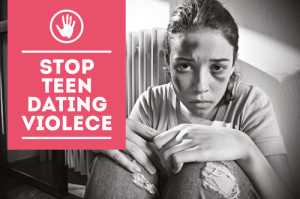
Zoe received almost 30 calls from her ex-boyfriend a day. She wasn’t allowed to hang out with her friends or any other boy besides him, not even male relatives. “He only wanted me to be with him,” said Zoe, a University of Arizona student.
“He always made me feel guilty for things I never did wrong,” said Zoe. “He controlled what I wore and who I hung out with. If I wore something he didn’t like he would get angry and start an argument.”
Nearly 1.5 million high school student’s nationwide experience physical dating violence, such as being slapped, according to the Centers for Disease Control and Prevention. Additionally, one in three adolescents in the U.S. is a victim of physical, sexual, emotional or verbal abuse from a dating partner, making it the most common type of youth violence. Zoe is one of those victims.
In Arizona, 17.3 percent of youth reported being a victim of one or more incidents of teen dating violence, according to the 2010 Arizona Youth Survey done by the Arizona Criminal Justice Commission. Arizona is among the second worst tier for percentage of students who experienced dating violence. Wyoming, Arkansas, Kentucky, Georgia, Washington D.C. and Maryland have the highest number of teen dating violence with 14 percent or more teens reporting abuse.
The CDC defines teen dating violence as the physical, sexual, psychological, or emotional violence within a dating relationship, including stalking.
“Teen dating violence has many different dynamics using a wide range of tactics including the need for control,” said Alejandro Palacios, a trainer at the Arizona Coalition Against Domestic Violence (AZCADV). “Other tactics include use of isolation, controlling who he/she speaks to and what they wear.”
Zoe’s relationship got so out of control that she had to block her ex-boyfriend on seven different forms of communication including Facebook, two e-mail addresses, Instagram etc. But somehow he still managed to contact her leaving Zoe no choice but to consider filing a restraining order.
Zoe’s name has been changed because she fears continued retribution.
In Arizona, dating violence falls under the Arizona Revised Statute that covers domestic violence. The statue applies in situations where the victim and defendant was or is in a romantic or sexual relationship. Arizona Statute did not recognize dating relationship violence under the law until 2009.
The Legislature passed “Kaity’s Law,” in 2009, which gives those in dating relationships protection under the Domestic Violence statute 13-3601. The law was created after 17-year-old Kaitlyn Sudberry boyfriend shot and killed her.
Today, a third domestic violence misdemeanor can be tried as a felony resulting in prison time. In Arizona, aggravated domestic violence, involving serious injury to the alleged victim or the use of a weapon, carries a potential sentence of up to 3 years in prison. Persons convicted of misdemeanor domestic violence must complete a domestic violence offender treatment program in addition to fines, jail or probation.
The CDC as well as other governmental and non-governmental agencies have recently recognized teen dating violence as a significant public health problem as the numbers of offenders continue to increase. In Maricopa County for instance, there were 770 adult offenders under supervision in the Domestic Violence Program in 2014 compared to 707 in 2013, according to the Maricopa County Adult Probation 2014 and 2013 annual reports.
Teenagers who experience dating violence could be more likely to get involved in violent relationships and have health problems as young adults, said said Deinera Exner-Cortens, a postdoctoral fellow at the Center for Addiction and Mental Health Centre for Prevention Science in London, Ontario. Exner-Cortens and her colleagues also found that teens who were victims of dating violence faced higher rates or depression, suicidal thoughts and heavy drinking.
“What’s most concerning is teen dating violence is promoting revictimization in the long term,” said Exner-Cortens.
One of the primary risk outcomes of dating violence is that it puts people on a path of becoming a victim of violence in future relationships. Arizona consistently ranks among the states with the highest domestic violence homicide rates, according to Arizona Coalition Against Domestic Violence. Every five minutes a law enforcement officer responds to a domestic violence call in the state of Arizona, according to the Arizona Coalition Against Domestic Violence.
It is important to teach children at a young age what a healthy relationship looks like, said Exner-Cortens. The focus is education on prevention and being proactive rather than reactive in teaching teens about dating violence.
February is National Teen Dating Violence Prevention and Awareness Month. Health care professionals say it’s a great opportunity to raise awareness and focus on ending the cycle of dating violence.

Photo by: senecascratchingpost.com
“It is important to teach people that no one deserves to be abused,” said Palacios.
For Help or information about teen dating violence:
http://gocyf.az.gov/Special/BTC.asp
Rachel Leinson is a reporter for Arizona Sonora News, a service from the School of Journalism with the University of Arizona. Contact her at Rleinson@email.arizona.edu
Click here for a Word version of this story and high resolution photos.


